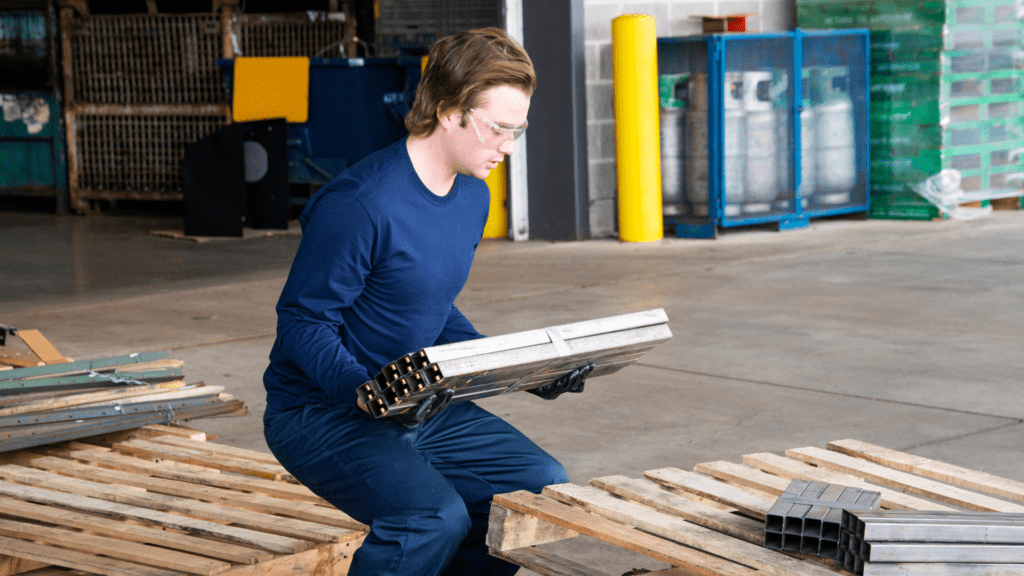In today’s fast-paced work environment, it’s more important than ever to focus on creating a safe and comfortable workspace for employees. Many workplaces, unfortunately, prioritize efficiency over employee comfort and well-being, leading to a range of physical and mental health problems.
By focusing on ergonomics, businesses can create a workplace that is both comfortable and efficient, leading to increased productivity and happier, healthier employees.
In this blog post, we’ll explore the many benefits of prioritizing ergonomics, including reduced injury and illness rates, improved employee satisfaction and retention, and increased productivity. We’ll also provide practical tips and advice for incorporating ergonomic principles into your workplace, regardless of your industry or company size. So, whether you’re a small business owner or a large corporation, join us as we explore the benefits of ergonomics and learn how you can create a more efficient, productive, and comfortable workplace for your employees.
What is Ergonomic Design?
Ergonomic design is the process of designing workplaces, tools, equipment, and products to reduce physical stress and improve overall efficiency. This includes taking into account factors like posture, reachability, size/weight of objects, and joint angles when developing workplace layouts and equipment. By optimizing these elements of the workspace, employers can create a safe environment that encourages efficient and comfortable work.

How Prioritizing Ergonomics Increases Efficiency
Ergonomic design can improve workplace efficiency in several ways. First, ergonomic design focuses on creating a workspace that is comfortable and safe for employees. This means that employees are less likely to experience physical discomfort, pain, or injuries, which can cause them to take time off work or reduce their productivity. By reducing the risk of physical discomfort or injuries, employees are more likely to stay healthy, focused, and motivated, resulting in increased productivity.
Secondly, ergonomic design optimizes the workspace to fit the needs of employees, reducing unnecessary movements and strain on the body. This means that tasks can be completed more efficiently and effectively, without the risk of fatigue or repetitive strain injuries. By reducing the effort required to complete tasks, employees can work more quickly and effectively, leading to increased productivity.
Thirdly, ergonomic design can help to reduce employee stress and fatigue, which can have a significant impact on productivity. By creating a comfortable and supportive workspace, employees are less likely to feel stressed, anxious, or fatigued, which can lead to increased productivity, improved job satisfaction, and reduced turnover rates.
The Benefits of Prioritizing Ergonomics
There are many benefits to incorporating ergonomic principles into your workplace, including improved employee satisfaction and retention, reduced injury and illness rates, and increased productivity. Let’s take a closer look at these advantages:
• Improved Employee Satisfaction & Retention: Creating a comfortable and supportive workspace can lead to increased job satisfaction, leading to higher retention rates.
• Reduced Injury & Illness Rates: Ergonomic design can help reduce the risk of injuries or illnesses due to physical stressors, leading to fewer lost workdays and reduced medical costs.
• Increased Productivity: By optimizing the workplace for efficiency, ergonomic design can lead to increased productivity, as employees are able to complete tasks more quickly with less effort.
Related Article: Ergonomic Injuries
Incorporating Ergonomics into Your Workplace
Regardless of your industry or company size, incorporating ergonomic principles into the workplace is a smart decision that can lead to significant benefits for both employers and employees. Here are some practical tips for optimizing your workplace for ergonomics:
• Invest in Ergonomic Equipment & Furniture: Investing in ergonomic office furniture and equipment, such as chairs, desks, keyboards, and monitors for office settings and adjustable tables, tool balances, and other anti-fatigue devices can help to reduce the risk of physical discomfort or injuries.
• Create an Ergonomic Workspace Layout: Optimize your workspace layout to encourage proper posture, reduce unnecessary movements, and improve reachability.
• Encourage Employees to Take Breaks: Regular breaks can help reduce the risk of fatigue or repetitive strain injuries, so make sure to encourage employees to take regular breaks throughout the day.

How Can Employers Create Ergonomic Workspaces?
Employers can promote an ergonomic workspace in several ways.
- Conducting a workplace ergonomics assessment: This involves analyzing the workspace and identifying any ergonomic hazards, such as improper posture, awkward positions, repetitive motions, and excessive force. The assessment can be done by a professional ergonomist or an experienced employee, and the findings can be used to create an ergonomic improvement plan.
- Providing ergonomic equipment and furniture: Providing these tools can help employees work in a comfortable and safe position, reducing the risk of injury and increasing productivity.
- Educating employees on proper ergonomics: This involves training employees on proper posture, positioning, and movement to reduce the risk of injury and discomfort. Employers can also provide guidelines and posters to remind employees of proper ergonomic practices.
- Encouraging movement and breaks: Sitting in one position for extended periods can lead to muscle fatigue and discomfort. Employers can encourage employees to take short breaks and stretch, walk, or perform other activities to reduce the risk of injury and improve circulation.
- Creating an ergonomic culture: Employers can create a culture that values and prioritizes ergonomic practices, promoting the use of ergonomic equipment, and encouraging employees to speak up about any discomfort or hazards they notice in the workspace.
By taking these steps, employers can create a safe and comfortable workplace that encourages employee productivity, satisfaction, and retention. Making ergonomics a priority in the workplace is an investment that will pay off in the long run–improved safety and efficiency for both employees and employers alike.
Conclusion
Prioritizing ergonomics is beneficial for businesses and employees alike because it can lead to increased productivity, reduced absenteeism, and improved employee well-being. Additionally, by promoting proper ergonomic practices, employers can improve employee well-being, reduce the risk of injuries, and increase job satisfaction. This, in turn, can lead to increased employee retention rates and reduced healthcare costs for the employer. Overall, prioritizing ergonomics can lead to a healthier, more productive workforce and a more profitable business.
Contact WorkSafe to find out how we can help your company today!
Working to keep you safe, healthy, and productive,

